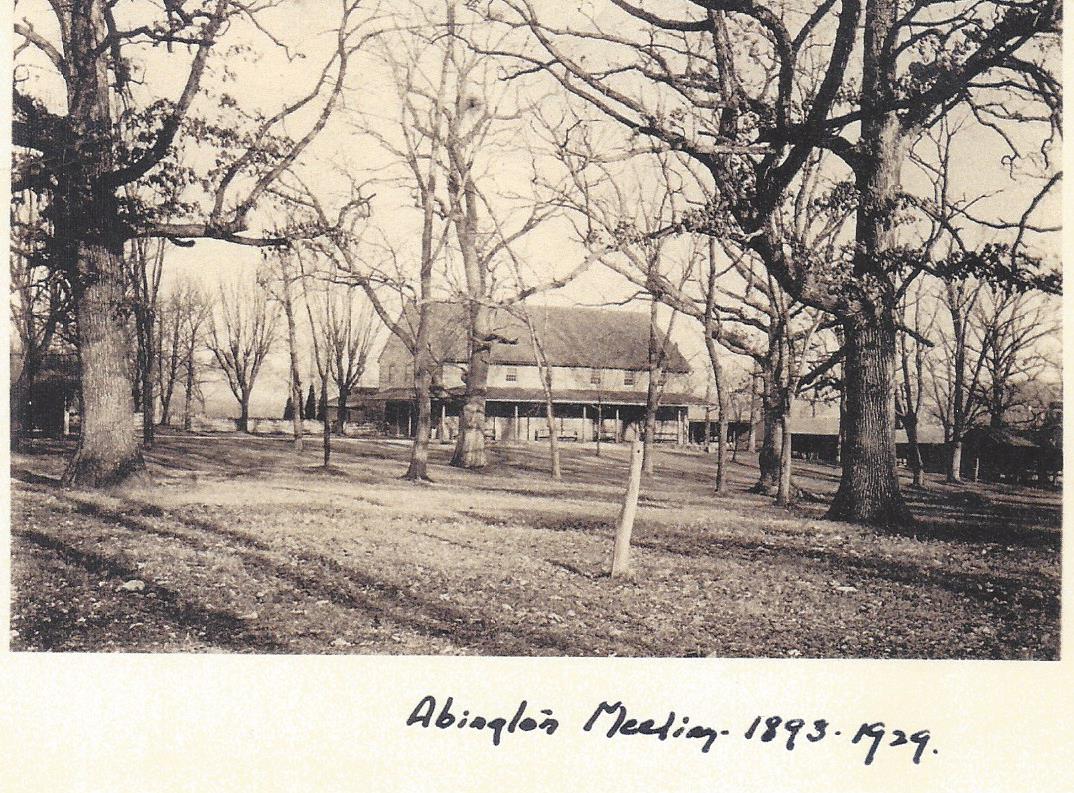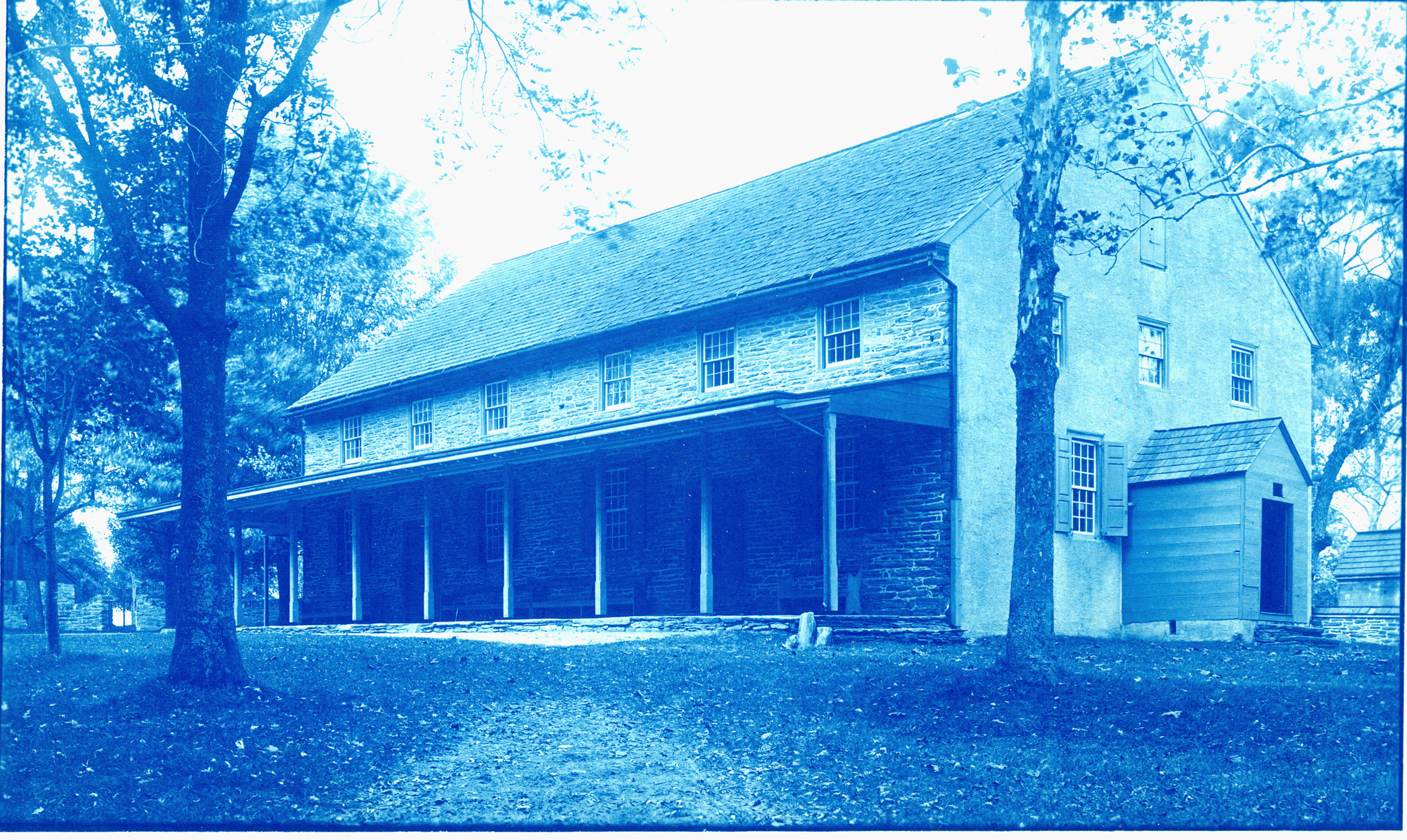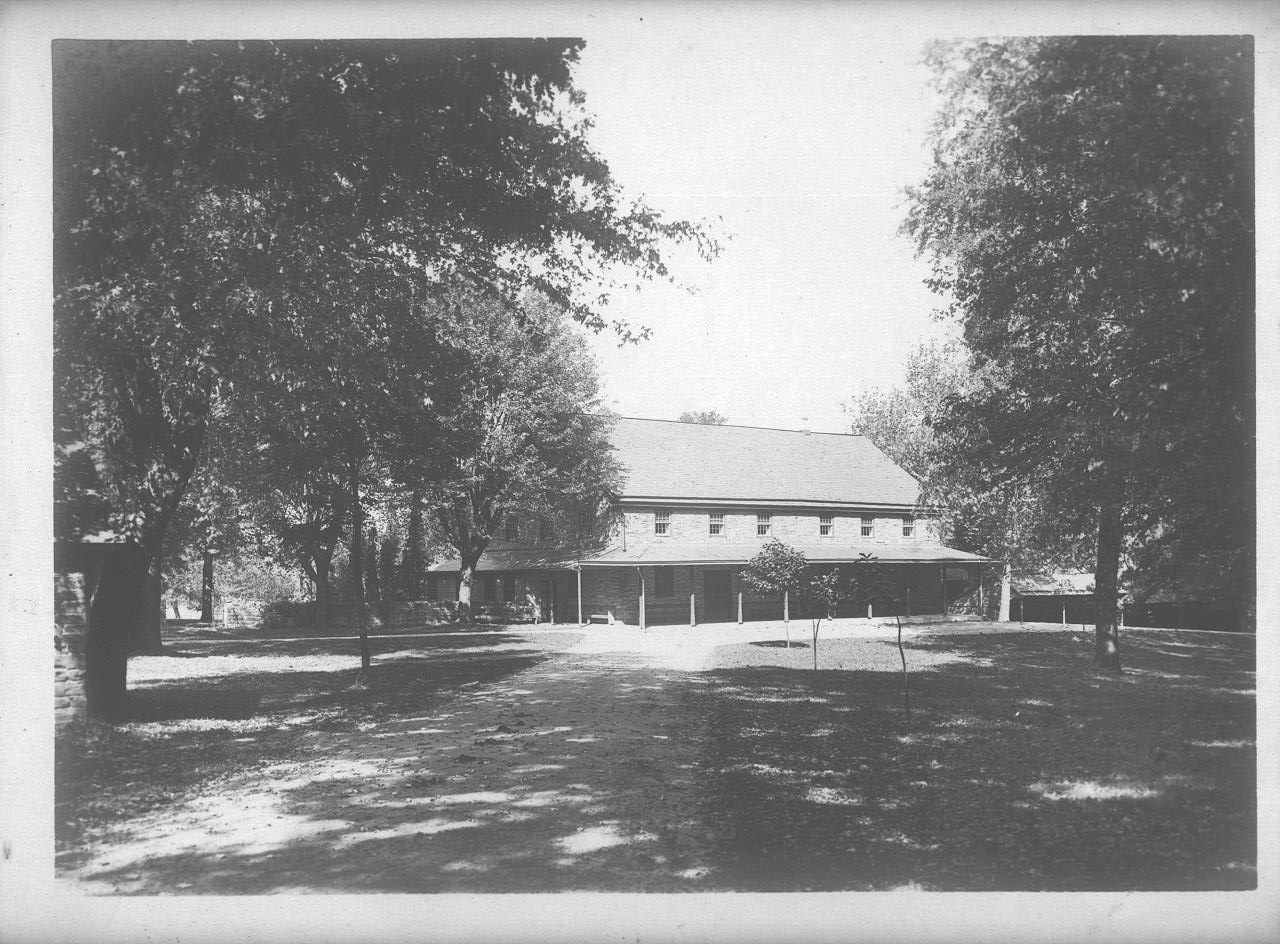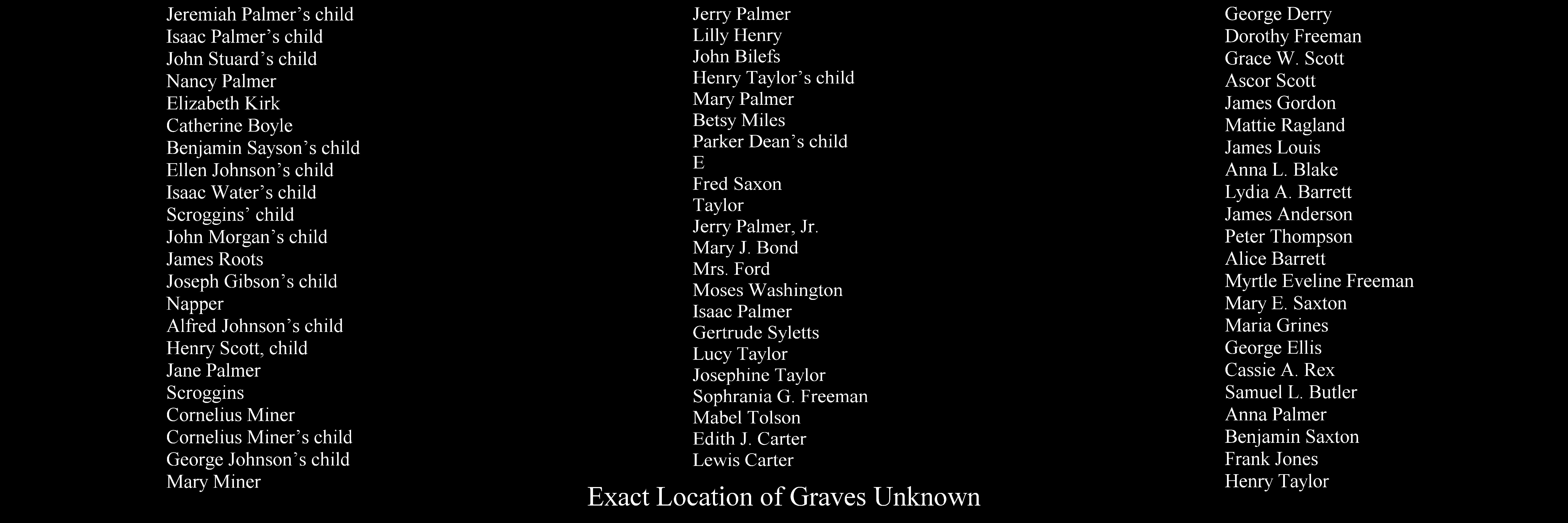


Abington Monthly Meeting History
We are called a "monthly meeting" because we gather once a month to attend to business. Similarly, Abington Quarterly Meeting gathers four times a year, and Philadelphia Yearly Meeting meets annually. Abington Monthly Meeting (also called Abington Friends Meeting) is part of Abington Quarterly Meeting, which is a group of nine monthly meetings in our local area, and Philadelphia Yearly Meeting, an association of over 100 Quaker meetings in a four-state region.
Abington Friends meetinghouse stands on Lenapehoking, part of the traditional homeland of the Lenni Lenape. We honor and pay respect to the Lenape in the past, present and future. Our hope is to bring healing, and we are committed to seeking a renewed and ongoing right relationship with the Lenape People.
“Thy God bringeth thee into a good land,” were the words of William Penn as he introduced immigrants from England to the opportunities of the new settlement, now called Pennsylvania. It was indeed a good land of brooks of water, of fountains and depths that spring out of valleys and hills,” as Penn went on to describe. “The soil is good, air serene and sweet from cedar, pine and sassafras, with a wild myrtle of great fragrance.”
Among the early settlers were Richard Wall and his wife Joane, who arrived in mid-summer of 1682, purchasing 300 acres listed in Penn’s original. land-grant survey in deeds dated May 2 & Sept 10, 1683. The Wall farmhouse, portions of which still stand in Wall Park by Tookany Creek in Elkins Park, was the first gathering place for meetings of the Religious Society of Friends in this area, originally convened there December 3, 1683.
In 1697 John Barnes donated 120 acres, situated about a mile north of the Wall house, “for erecting a meeting house for Friends and toward the maintenance of a school under the direction of Friends.” He also gave a gift of 100 pounds sterling), a more valuable gift than the land, which cost the equivalent of approximately 10 cents an acre. The original Meetinghouse was erected on the donated site between 1698 and 1699. The first recorded Abington Monthly Meeting for business was held there on April 9, 1702.
By the middle of the 18th century Abington’s meetinghouse was the only building large enough to hold Quarterly Meeting. This is the event held four times a year when all the monthly meetings in the area come together to conduct business. In 1760 a blacksmith shop was built next to the meetinghouse. Many Quakers came to meeting in horse-drawn vehicles or on horseback; by having a blacksmith shop and engaging a smith for the day they could have their horses shod while they worshiped or attended to business. This structure still stands, with some of the equipment and tools intact. The original school met in the meetinghouse until a separate structure was built for it in 1784; this still stands and is now the caretaker’s house. The meetinghouse was enlarged in 1786, probably using a part of the walls of the original structure, and again in 1797 when the western half of the present meetinghouse was built.
In 1827 Quakers in the Philadelphia area divided over issues raised by the “great revival,” a wave of religious enthusiasm that affected almost all protestants in America. In the countryside around Philadelphia Quaker farmers generally took the more conservative “Hicksite” side of the dispute, while in the city the more fashionable folk took the revival inspired “Orthodox” side. At Abington the result was that a small Orthodox faction built the “Little Abington Meetinghouse” on a separate property about 1/4 mile to the east, a structure which still stands, now converted into an exhibit annex by the Abington Township Art Center.
Various improvements to the meetinghouse were made in the 19th century, including a movable partition installed at the request of female members, a balcony, and in 1893 a front porch. The building was heated by stoves until the “John Barnes Wing” was built in 1929, when central heating was added. Finally, the east wing was built in 1966 to be used for First Day School. Eventually, the East Wing housed the preschool for our Abington Friends School. Today, the East Wing building houses a tenant school.
Two brass plaques mark the main entrance to our graveyard, one showing our Peace Testimony (erected in 1984) and one acknowledging unmarked graves containing the remains of early Quakers, settlers, people of African descent, and other persons whose race, creed and identity are known only to God (erected in 2015).
In 2016, when the Meeting dedicated the plaque at the entrance of the graveyard, several Meeting members researched and discovered some lists that included names of people of color (designated by "Col." next to their names in Quaker records) who were buried in unmarked graves in our graveyard. Prior to that time, we did not know these names. The names were compiled into one list in our program for that Plaque Dedication event, and the names were read out loud at that ceremony. In 2022, at the recommendation of our Reparations Subcommittee, the Meeting placed a grave marker listing the names of those people of color who had been interred within our graveyard. In accordance with our Equality Testimony, with the belief that all people are equal even in death, the marker was prepared within the guidelines for our graveyard. Our Quaker graveyard permits only names and dates on grave markers, but permission was given to make this marker larger than usual to accommodate all of the names. Because of the larger size, the marker is flat, similar to the markers on cremations graves within our graveyard. The Meeting placed this marker so that these names will be remembered and honored, especially because so many people of African descent have lost their family history through the enslavement of their ancestors. The design of the marker is shown below.

Our Abington Meeting was also the place where historical abolitionist Benjamin Lay worshiped. Click Here for more information.
Abington Meeting approved a Minute of Reconciliation in 2021. Click Here to read the full text.